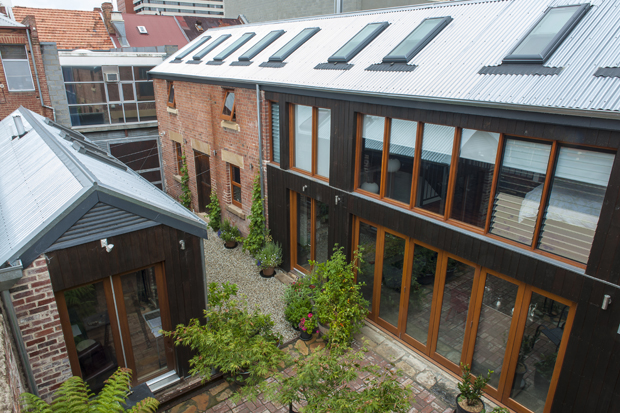Harrington House is an adaptive reuse of a heritage-listed warehouse, repurposed as a contemporary private dwelling and studio.
The inner city location and solar access constraints of the residence presented the main challenges for the architects at Booth & Watts. Furthermore, heritage requirements of the building prevented them from including exposed fixture, such as solar panels, on roof surfaces.
However, these barriers were overcome by good internal design and planning.
Within the house, additional rooms that are not in use can be closed off to reduce energy use. In its most compact form, only one area in the building– the combined living, kitchen, and dining rooms, and the mezzanine bedroom – would require heating.
This strategic design is supported by the highly insulated envelope of the building, which is well in excess of code requirements at an R7 minimum. Thermally efficient, this will allow the owners to save on energy and running costs in the long run.
Therefore, despite having a large volume of space with sub-optimal orientation and various constraints, Harrington House is still able to be effectively passively heated with little or no aid from mechanical solutions.

INITIATIVES
-
Maximum Star rated appliances and fixtures are used throughout, including lights, taps, showers, fridge, oven, and heating
-
The demolition phase provided a wide range of materials that were reused in the roof, internal doors and frames, exposed timber floor structure, external cladding and landscaping
-
Almost all materials from the site, and about 50% of newly introduced materials are from recycled or sustainable sources
-
Direct natural light is maximised through a northeast facing glass wall and a series of skylights. This solar energy is passively stored in the exposed concrete floor, and radiated into the building during cooler periods
Images: Booth & Watts

